“Ever tried. Ever failed. No matter. Try again. Fail again. Fail better.”  Nothing makes me happier than to see Tiger Woods reacquiring his competitive powers in the recent PGA Tour events in which he has played. And even if you are not a Tiger Woods fan you can’t help but admire his never-say-never attitude. Tiger has experienced his share of set-backs over recent years, like many golfers, but I don’t think anyone would argue that he is one of the most determined and resolute individuals in professional sport? His grit and determination is a model for all of us to understand and learn from—even though his circumstances are quite different from ours. Tiger has not only collected a cache of trophies and championships over his career, he has also amassed phenomenal wealth from his golfing prowess. So you have to wonder what kind of competitive drive he has, a drive that has him working as hard as ever, after nearly 20 years on tour, when he doesn’t have to. The Common Trait of Successful Individuals It is actually quite common to find high achieving individuals from the realms of professional sport and also business to have amassed immense financial wealth over their career, and yet they are still working as hard as ever, as if they didn’t have a cent to their name. Clearly financial freedom isn’t the only motivation that drives them. And it’s not about winning either, because when you talk to these individuals they will tell you that they lose many times more than they win. They are smart enough to know that they can’t ‘control’ much of anything in their life—especially winning. So why do they keep pushing themselves, and why do they try to keep getting better when they really don’t have to? I believe that their core driver is the consistent idea that they can remain competitive in an ever changing world over a long period of time. In other words, they love the challenge of continually adapting and improving their skills and abilities to be a constant and competitive force in whatever they do. Just look at the golfing greats such as Nicklaus, Palmer, Player and Norman who went into business with the same competitive drive they had on the golf course and have carved out a successful niche in other professional domains.  Developing Your Competitive Nature There’s a lesson here for all of us about the importance of persisting in the face of adversity, and to believe that you have the ability to adapt, grow and continually find ways to improve your competitive nature. How would you answer the following questions about your current competitive drive and nature?
We have worked with many elite golfers over the years and what we have learned from our experience is the guys and gals that stay in the game and continually get better are the most competitive golfers. They are the golfers who keep adapting and adjusting their game to the constant challenges they face.  The top professional golfers are able to adjust and adapt constantly and keep improving. You see, as your score average gets lower you cannot keep doing the same things that got you to that place. What got you there won’t keep you there, or get you where you wish to go. You need different information sources constantly, and you need to keep improving your skills to keep lowering your golf scores. When you practice to improve your game there is a vast difference between just practicing and hoping to get better, verses practicing with a highly evolved sense of purpose. Practicing to Practice Many golfers just go through the motions with their practice sessions with little drive to improve, and this lack of focused commitment usually means that they don't see the bigger picture of what's possible as a result of disciplined practice. Practicing to practice is a recipe for disaster, and if you often feel like you are doing this then get yourself out of this bad habit today. This habit is unproductive and will not help you to achieve the break through's you desire. Practicing to Compete On the other hand golfers who commit themselves to practicing as if they are always competing are doing just what Tiger and other exceptional individuals know and do. They take every practice session seriously, not ever wanting to waste one golf shot, or for that matter one minute of their time. Last Thoughts... The United States Olympic committee's motto can be seen all over the Olympic Training Center campuses in Colorado Springs, Colorado. These small signs can be seen from the gym, to the dining room, and also on doors to different training venues, and the signs simply read... Athletes, coaches, sports scientists and administrators are reminded constantly that the goal is the process of being your best every day, with the knowledge that you can and will find a way to be a better version of yourself tomorrow. You can develop and improve your competitive nature by understanding the difference between Practicing to Practice and Practicing to Compete. Never waste a minute of your time practicing without a definite and defined purpose. Seek out the specialist service providers that can guide you towards your goals and keep you right on the edge of your capability. 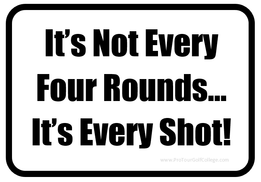 Create your own sign that reads 'It's Not Every Four Rounds, It's Every Shot" which you can place in locations you frequent that constantly reminds you of your need to stay competitive. Tiger Woods is an exceptional golfer, but he's no more special than you or I. But Tiger is smart in that he works very hard on improving his competitive powers, because he worked out long ago that the secret to success in anything you do lies in your ability to keep finding ways to sharpen your competitive edge. So get to work on sharpening yours; but remember that it's not so much a question of how, but more a question of now. Lawrie Montague and David Milne - Pro Tour Golf College The Professional Golf Tour Training College for Serious Amateur Golfers  Golfers who are trying to perform a mechanical motion are often fragmenting learning to swing the club and play golf. This is similar to students who are taking in information to give back on a test, without gaining any personal meaning for using the information beyond a classroom. Two questions that the brain will ask before new learning is stored are: 1) Does this information make any sense? 2) And does it have any meaning? Sense and meaning are independent of each other. A playful approach to learning can provide insights for making sense and gaining meaning. Our past experiences give meaning to new learning, and meaning is more significant than sense. Often information can make sense, but has little meaning for future use, in the present environment. For example, knowing a word is not the same as understanding its meaning, and also having the ability to use it in several contexts with knowledge of meaning. In play-to-learn environments, givers of information are influencing the learning process and are not just dispensing facts. In teaching fixing to get it right environments this often is not the case.  One of the brain’s most important skills is making predictions. If this, then that! Efficient approaches to learning enhances the brains power of prediction and also the skill of self-reliance for responding to future events in ever changing environments. Playful approaches to learning unconsciously evaluate what individuals need to make themselves aware of. Information that the brain can use to make predictions and decisions with is more useful than technical information that cannot be used for these acts. Therefore...
Trying to be correct or be exact is often at the cost of playful application, playful usefulness and playful accessibility. A playful approach to progress is trying to accomplish the next thing, it’s not trying to fix what just happened! NOTE: Janet Rae Dupree (NY Times 5-4-08) “Don’t bother trying to kill off old habits, once those ruts of procedures are warn into the brains hippocampus they are there to stay, sustained. Any new habit we engrave into ourselves creates parallel pathways that can bypass those old roads.” “The first thing needed for innovation is a fascination with wonder. But we are taught instead "to decide" (make a choice). To decide is to kill off all possibilities but one. A good innovator is always exploring the many other possibilities.” (Author of Open Mind)  Some have called playful learning anti-intellectual, but it is true critical thinking or problem solving at its best. Getting caught up in details and a volume of information can cause one to lose sight of their relationship to past experiences, other ideas and patterns. “Too much information? Ignore it" was the title of a story in the NY Times (11-11-07) about how information overload is slowing down maximizing personal production. Golfers should also take note! One of the aims of play-to-learn environments is to prepare individuals for using adaptations of basic core information in ever changing real world conditions. Play to learn environments enhance an individual’s ability to extend what has been learned in one context to many different environments. NOTE: Playful learning environments will broadly educate individuals; they are not training them to perform perfectly. “It would be a mistake to expose individuals to an expert model and assume that they will learn efficiently.” (P50 How People Learn) Play-to-learn environments are more about seeing options, and random probing, than performing perfectly. Attempts to explain details can limit progress with insensitivity to the power of a variety of conceivable random approaches. 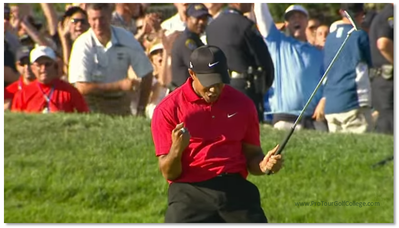 Minds in motion are at the core of learning that lasts. Often the villain is micro management of positions and parts, and moving away from the whole. Becoming an educated golfer (or educated in anything) is less about knowing the details of a peculiar skill or fact, than about being able to find your own way of creating workable outcomes by using just basic core information. Tiger Woods won the 2008 US Open by adjusting and creating workable, not perfect outcomes, with the playful self-skills he came to golf with as a young child. It seems that today’s approach to golf instruction is grounded in a culture of teaching “a swing,” and not a variety of ways to use a golf club. Two opposing questions could be asked;
Playing to learn environments equip golfers to be consistently creative with their golf club. By Michael Hebron PGA MP CI 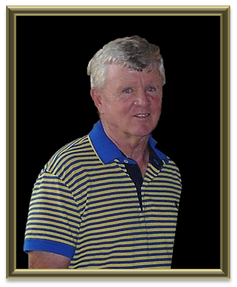 Michael Hebron PGA Master Professional Michael Hebron PGA Master Professional Decades ago Michael Hebron played a key role in orchestrating the first PGA Teaching and Coaching Seminar, bringing together instructors from across the country to share ideas on teaching methods. Following that event, Michael gained the nickname of "the teacher's teacher". Highly respected throughout the international golf community, Michael consults on golf instruction to PGA Switzerland, Italy, France, Finland, Canada, Japan and Sweden. He has given instruction clinics at 30 PGA of America sections. Through his dedication Michael earned the honored status of becoming the 24th PGA of America Master Professional. His book, See and Feel the Inside Move the Outside, was the first golf instruction book accepted as a PGA Master’s thesis. Since then, he has written hundreds of articles for leading golf magazines and authored 4 other books and 3 DVDs. Michael has appeared on The Charley Rose Show, Today Show, The Golf Channel and numerous local cable shows. Golf Magazine and Golf Digest have consistently named Hebron as a member (since their first listings) of America’s Top 50 Instructors. Over the years, Hebron has worked with many successful golfers from the PGA and LPGA tours and several national champions in America and abroad including three time men's major winners. He has also worked with many successful high school and college golfers—but Michael’s pride is working with club golfers. You can contact Michael through his newly updated website at http://www.michaelhebron.com/ or through his Facebook page at https://www.facebook.com/neurolearninggolf.live  Is there anything more frustrating than hitting the ball great on the practice range but not being able to do it to anywhere near to the same standard on the golf course? Maybe you are someone who holes a lot more putts on the practice green than you hole on the golf course; or possibly you chip and pitch your ball closer to the hole on the practice green, but you find that you hit it a lot further away from the hole on the golf course. I’m sure you are familiar with this problem, it’s very common for all standards of golfers, and it often appears to be the biggest obstacle to get in the way of lowering handicaps and golf scores. David and I are very familiar with this problem and we see golfers from average to pro level struggling to get their practice game standard to the golf course within a reasonable amount of time. We describe this as "transference ability," which is the ability of golfers to perform their golf skills equally as well on the practice ground and on the golf course. Train on the Practice Ground to Perform on the Golf Course Transference ability is most commonly observed with successful tour golfers who have developed this ability to practice skilfully and then perform on the golf course with virtually the same level of success. What’s interesting about the idea behind transference ability is that it is another way of describing your ability to learn a skill set thoroughly enough to trust it when you perform it on the golf course in tournaments. The key word here is "trust," and as we all know or have probably heard, "trust must be earned." However, it is how trust is earned that is the real key to successful transference of skills to the golf course, and in this article I'll show you how to do it easily and well. So What Exactly is Trust and Why is it Important? Well, the dictionary describes the word Trust as a firm belief in the reliability, truth, or ability of someone or something. Basically trust as it relates to golf performance describes your level of belief in the reliability of your golf techniques under any type of perceived pressure on the golf course in tournaments. Therefore trust is primarily developed as a consequence of the way your golf skills are practiced and developed on the practice ground. What we are really talking about is your golf practice methodology, your practice approach, or the specific way you practice your golf skills to bring about changes in the way you perform them on the golf course in tournaments.  Basically from this point forward it will be helpful for you to start seeing your golf practice as a series of strokes or trials that grow or expand your learning potential. This takes place within a period of time on the practice ground, or even on the golf course. Like learning any motor skill, you are required to perform multiple repetitions to augment or boost learning potential. The key to successful transference of skills from the practice ground to the golf course will ultimately get down to your commitment and resolve to perform each-and-every-stroke with your full attention on each stroke, and your intention to perform each stroke to the best of your current ability. When you perform each stroke you are in fact generating a small experience over and over, and it’s the quality of each individual experience when repeated many times that ultimately leads to improvement, and eventual reliability in your technique. I’m sure you realize that it is not uncommon for some golfers to practice their golf stroke for many hours but not experience anywhere near the level of progress they desire. Why does this happen? The 2 main reasons we come across at Pro Tour Golf College are a poor attitude over less than stellar results, and unproductive practice habits. So how can we improve this situation to fast-track our golf skill development so we can achieve better results on the golf course? With 2 unique concepts I'm going to share with you. Aiming Your Attitude and Applied Golf Skills Practice...  Contact Us Today to Join Our Next Semester in Perth at [email protected] Aiming Your Attitude in the Right Direction  Why do some elite golfers miss relatively easy putts when they have a great stroke and are good at reading greens? Well you can be competent at being incompetent. Huh! You can practice something with a poor attitude and when you produce less than desirable results, you get angry and frustrated. So in this scenario it doesn't matter how good your stroke is, or how well you read greens. An excellent putting stroke and exceptional green reading ability with poor attitude towards missing means that you will struggle to transfer your skills to the golf course successfully. So all the good stroke and green reading work you have done up to this point is nullified or cancelled out by your poor attitude to the missed putts. We see golfers all the time make things that are bad, worse. They take one experience which they find offensive, and they emphasize their displeasure in a way that encourages more of it. This is more common than you would think and the way out of it is to apply a simple yet profound principles of Zen that we teach at Pro Tour Golf College to all our students that can turn around this attitude in a heartbeat. Mind Without Mind Mushin means No Mind, or Mind Without Mind, and simply describes the ability to not judge yourself or add emotion to a situation. When golfers miss putts or hit bad shots and get upset they are judging themselves and applying emotion to the situation which intensifies it. This is what we mean by Aiming Your Attitude. Aim your attitude away from judgement and emotion to a place of complete acceptance. Keep an open mind and realize that with growth there is always resistance. You must continually adjust your attitude to the up's and down's of performance. Transferring your golf skills to the golf course gets down to a lot more than just making perfect looking golf swings and putting strokes. Your attitude to the way you develop yourself in practice plays a huge part in whether you can develop your transference ability. It's also going to get down to a very specific way of practicing your golf skills so that you give yourself the best chance possible of transferring them to the golf course sooner. Applied Golf Skills Practice, The Secret to Transferring Your Golf Skills to the Golf Course Faster 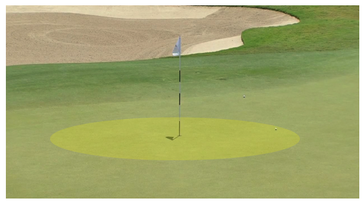 The students at Pro Tour Golf College are just like you. They want to improve their skills and transfer them to the golf course sooner rather than later, and we have a very specific way we go about doing this. I'm sure that you would agree that it would be helpful if you could practice your skills with a specific practice process that manages your skills as it guides you towards effective skill transfer? Every student in our Tour Golfer Bridging Program goes through our E.G.I.S Assessment at least 3 times over a 10 week period to basically find out how good they are with their short-game and long game skills. For example, during the assessment the students will hit sets of 10 shots to various targets located between 10 yards/metres and 25 yards/metres from the edge of the green covering chip, pitch, bunker, lob, rough and buried bunker shots that are defined by target zones of differing sizes. After the assessment has been completed they add up their results and their results place them in a specific colour category based on the score they had. For example, in a recent Greenside Wedge Skills Assessment at our Jakarta Indonesia location, one of our students William (Name changed for privacy) had the following results in the 6 sub categories of the Greenside Wedge Skills Assessment. E.G.I.S GREENSIDE WEDGE ASSESSMENT - SUB CATEGORY RESULTS 1. Chip Shots.........................30% = Yellow Target Zone Golfer 2. Pitch Shots........................52.5% = Orange Target Zone Golfer 3. Bunker Shots.....................27.5% = Yellow Target Zone Golfer 4. Lob Shots..........................32.5% = Yellow Target Zone Golfer 5. Rough Shots......................47.5% = Orange Target Zone Golfer 6. Buried Bunker Shots..........25% = Yellow Target Zone Golfer Now if you study our Greenside Wedge Skills Target Zone Practice Matrix (below) you can see that we can guide and manage William's learning by adjusting the size of his target zones when he practices these particular skill sets, and also give him a reasonable benchmark to aim at achieving to bring about skill transference on the golf course in tournaments. Basically William's score of 30 percent in his chipping assessment places him in the Yellow Target Zone category, and the matrix suggests that he needs to achieve results of 50 percent or higher (70 percent of the time) in this colour zone when he practices his chipping skills before he can graduate to the Orange Target Zone level. You can see that the Orange Target Zone has a smaller target radius for chipping, and a 10 percent higher benchmark to achieve for William to graduate to the Red Target Zone. In other words, as William improves his skills the challenge becomes slightly more difficult, and the benchmark is higher to achieve as well. 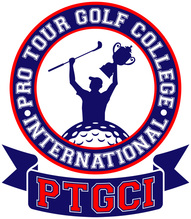 Perth and Jakarta Perth and Jakarta Applied golf practice gets down to your attitude to improvement and how you go about learning and developing your skills. A quality investment in your golf practice will grow the reliability of the different strokes you need to compete successfully on the golf course. You must develop an ideal performance attitude (Mushin) for every single stroke you make and then combine it with a method of practice that challenges you as it manages your improvement. Successful skill transference really boils down to your ability to perform your skills reliably, so it just makes good sense to build the best attitude possible with every shot you practice, with the best practice method available. Lawrie Montague and David Milne - Pro Tour Golf College The Professional Golf Tour Training College for Serious Amateurs and Professionals ALL THIS FOR LESS THAN THE COST OF 2 GOLF LESSONS
1. YOU GET 24 HD INSTRUCTION VIDEOS (Over 4 Hours of Viewing time) 2. YOU GET AN 88 PAGE MANUAL TAKING YOU STEP-BY-STEP THROUGH THE COMPLETE E.G.I.S GOLF IMPROVEMENT SYSTEM 3. YOU GET 10 TEMPLATES TO RECORD AND TRACK YOUR RESULTS IN YOUR ASSESSMENTS AND PRACTICE SESSIONS 4. YOU GET LIFETIME ACCESS TO THE E.G.I.S PROGRAM IN THE MEMBERS AREA FOR A VERY LOW INVESTMENT The Elite Golfer Improvement System E.G.I.S is Currently Being Used By Golfers in More Than 15 Countries and is an Online (Downloadable) Program That Will Take You Step-By-Step to Lower Golf Scores and More Enjoyment.  When I talk to golfers about their sources for building confidence in their game, amateur and elite players often tell me that successful performances are their number one determinant of confidence. This response raises some important questions to think about:
You’re then left with HOPE as a strategy, feeling anxious, over-whelmed, and never in control of your performance.  When players’ focus solely on results as their confidence building blocks learning is compromised and the ability to develop reliable recipes for winning doesn't happen. Many athletes talk about ‘performance’ and they actually mean ‘results.’ There is a distinction. Performance is the input or your recipe you create to maximize your chances of achieving the outputs (result). Performance is not results. Results are results. Put another way, performance is the HOW and the result is the WHAT. To play golf at the level you want more consistently and feel confident in what you are doing, you have to focus on your performance building blocks as much as you do the results. A results-only focus will set you up to believe that ‘you are only as good as your last result’ and that can be scary when you are in a rut and haven’t strung a few solid rounds together for a while. When you focus solely on results as your foundation for confidence in your game you will respond poorly to performance slumps, and fall into the all too common pattern of worry, doubt, and dramatic meetings with your coach about a swing over-haul to find form.  Think about how gritty players get the job done when they aren’t feeling at their best? It always comes down to having the right performance focus, on your key ingredients that you have control over no matter how poorly you are striking the ball. Top players not only achieve great results consistently but also love to compete. This is because they understand their recipe for winning, and don’t go into events hoping things will go their way. They go in confident in a game plan they have tested, and they focus on quality preparation that is NOT based around tweaking their swing or hitting it well. Here are 5 ways for shaping your performance focus and building a reliable recipe for true confidence:
Dr Jay-Lee Nair Visit Dr Jay-Lee to learn how to shape your performance process at the Singapore Sports Medicine Centre. |
Archives
June 2019
|
Proudly Supported By
Copyright © 2011 - 2018 Pro Tour Golf College
Website Managed By Golf Performance Media
All Rights Reserved
Website Managed By Golf Performance Media
All Rights Reserved




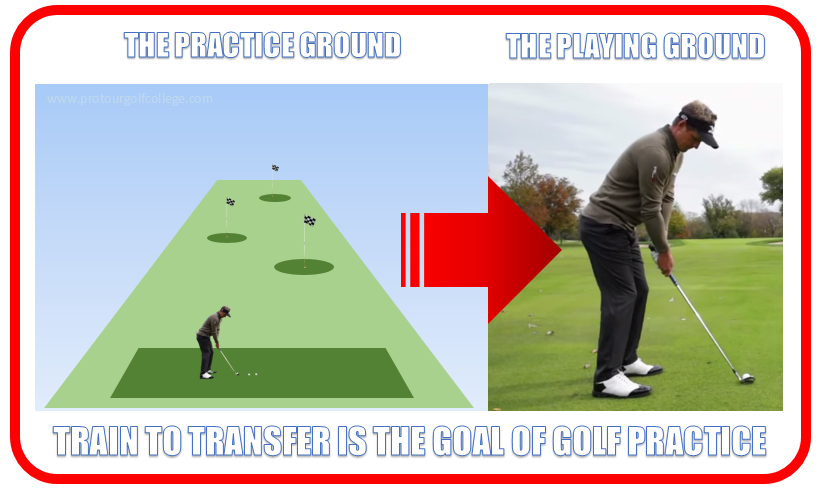




 RSS Feed
RSS Feed



